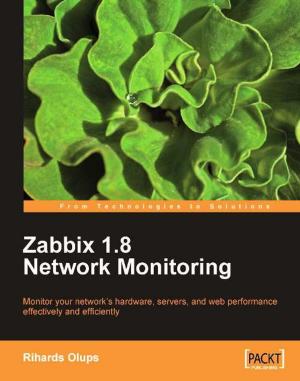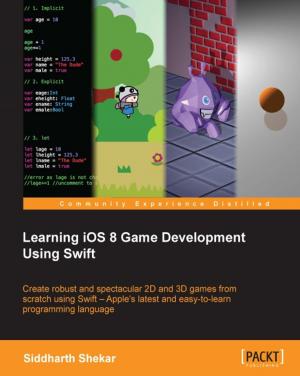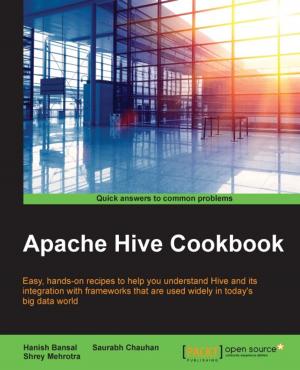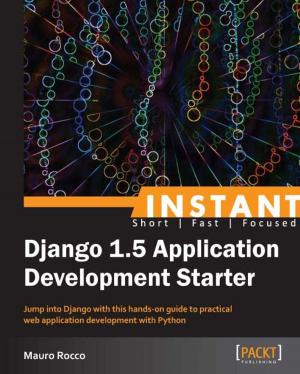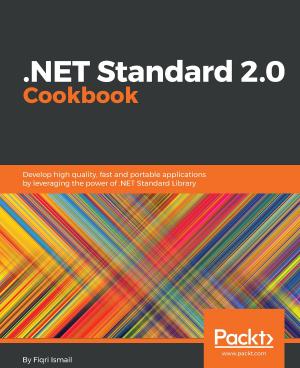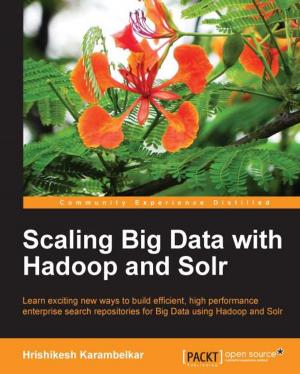Mastering QGIS - Second Edition
Nonfiction, Computers, Database Management, Programming, Programming Languages| Author: | Kurt Menke, GISP, Dr. Richard Smith Jr., GISP, Dr. Luigi Pirelli, Dr. John Van Hoesen, GISP | ISBN: | 9781786463623 |
| Publisher: | Packt Publishing | Publication: | September 30, 2016 |
| Imprint: | Packt Publishing | Language: | English |
| Author: | Kurt Menke, GISP, Dr. Richard Smith Jr., GISP, Dr. Luigi Pirelli, Dr. John Van Hoesen, GISP |
| ISBN: | 9781786463623 |
| Publisher: | Packt Publishing |
| Publication: | September 30, 2016 |
| Imprint: | Packt Publishing |
| Language: | English |
Go beyond the basics and unleash the full power of QGIS with practical, step-by-step examples
About This Book
- This book is your one-stop solution to all of your GIS needs using the open source QGIS
- Master QGIS by learning about database integration, geoprocessing tools, Python scripts, advanced cartography, and custom plugins
- This example-rich, practical guide will help you create sophisticated analyses and maps
Who This Book Is For
If you are a GIS professional, a consultant, a student, or perhaps a fast learner who wants to go beyond the basics of QGIS, then this book is for you. It will prepare you to realize the full potential of QGIS.
What You Will Learn
- Create and manage a spatial database
- Get to know advanced techniques to style GIS data
- Prepare both vector and raster data for processing
- Add heat maps, live layer effects, and labels to your maps
- Master LAStools and GRASS integration with the Processing Toolbox
- Edit and repair topological data errors
- Automate workflows with batch processing and the QGIS Graphical Modeler
- Integrate Python scripting into your data processing workflows
- Develop your own QGIS plugin
In Detail
QGIS is an open source solution to GIS. It is widely used by GIS professionals all over the world. It is the leading alternative to the proprietary GIS software. Although QGIS is described as intuitive, it is also by default complex. Knowing which tools to use and how to apply them is essential to producing valuable deliverables on time.
Starting with a refresher on the QGIS basics, this book will take you all the way through to creating your first custom QGIS plugin. From the refresher, we will recap how to create, populate, and manage a spatial database. You'll also walk through styling GIS data, from creating custom symbols and color ramps to using blending modes. In the next section, you will discover how to prepare vector, heat maps, and create live layer effects, labeling, and raster data for processing. You'll also discover advanced data creation and editing techniques.
The last third of the book covers the more technical aspects of QGIS such as using LAStools and GRASS GIS's integration with the Processing Toolbox, how to automate workflows with batch processing, and how to create graphical models. Finally, you will see how to create and run Python data processing scripts and write your own QGIS plugin with pyqgis.
By the end of the book, you will understand how to work with all the aspects of QGIS, and will be ready to use it for any type of GIS work.
Style and approach
This step-by-step comprehensive guide will let you dig your teeth into working with spatial databases, creating your own QGIS plugins, and creating your own custom graphical models.
Go beyond the basics and unleash the full power of QGIS with practical, step-by-step examples
About This Book
- This book is your one-stop solution to all of your GIS needs using the open source QGIS
- Master QGIS by learning about database integration, geoprocessing tools, Python scripts, advanced cartography, and custom plugins
- This example-rich, practical guide will help you create sophisticated analyses and maps
Who This Book Is For
If you are a GIS professional, a consultant, a student, or perhaps a fast learner who wants to go beyond the basics of QGIS, then this book is for you. It will prepare you to realize the full potential of QGIS.
What You Will Learn
- Create and manage a spatial database
- Get to know advanced techniques to style GIS data
- Prepare both vector and raster data for processing
- Add heat maps, live layer effects, and labels to your maps
- Master LAStools and GRASS integration with the Processing Toolbox
- Edit and repair topological data errors
- Automate workflows with batch processing and the QGIS Graphical Modeler
- Integrate Python scripting into your data processing workflows
- Develop your own QGIS plugin
In Detail
QGIS is an open source solution to GIS. It is widely used by GIS professionals all over the world. It is the leading alternative to the proprietary GIS software. Although QGIS is described as intuitive, it is also by default complex. Knowing which tools to use and how to apply them is essential to producing valuable deliverables on time.
Starting with a refresher on the QGIS basics, this book will take you all the way through to creating your first custom QGIS plugin. From the refresher, we will recap how to create, populate, and manage a spatial database. You'll also walk through styling GIS data, from creating custom symbols and color ramps to using blending modes. In the next section, you will discover how to prepare vector, heat maps, and create live layer effects, labeling, and raster data for processing. You'll also discover advanced data creation and editing techniques.
The last third of the book covers the more technical aspects of QGIS such as using LAStools and GRASS GIS's integration with the Processing Toolbox, how to automate workflows with batch processing, and how to create graphical models. Finally, you will see how to create and run Python data processing scripts and write your own QGIS plugin with pyqgis.
By the end of the book, you will understand how to work with all the aspects of QGIS, and will be ready to use it for any type of GIS work.
Style and approach
This step-by-step comprehensive guide will let you dig your teeth into working with spatial databases, creating your own QGIS plugins, and creating your own custom graphical models.



